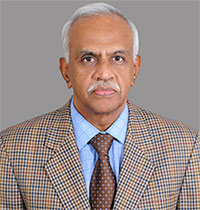
Dr. Venkita. S. Suresh,
Group Medical Director, Kauvery Hospital
A Pilgrim’s Progress
(With apologies to John Bunyan who wrote the original book by that name in AD 1678)
When you are born in rural Kerala into a large family in the middle years of the last century, you arrived in the same dark room where your siblings and cousins were also born. Midwives were unheard off in the village; mothers who had launched a dozen babies of their own into the world, some of who lived and some died, also helped your mother to launch you. No doctor came home; the only doctor to be found for miles around was a gentle homeopath whose tiny white and sweet pills saw you through the ills of childhood.
Growing up was carefree and fun. Boys were expected to up on the tree, like monkeys, plucking your own fruits and munching. You either jumped into the pond or swam across the river if you wanted both a bath and some fun. If you did not learn swimming fast, you drowned. You turned up in the house only when you were hungry. Children were not expected to be seen or heard till you joined school.
You ran to school, ran back for lunch and returned to school, on bare feet. But studies were important; your marks were checked by elders.
It was in a government lower primary school I discovered my penchant for writing, directing and acting in plays. The theme was always a variation on the theme ’Police and thief’. The police inspector was the hero, who wore khaki shorts and shirt and used two belts, one around the waist and one across the chest, and brandished a cheap plastic pistol bought from the street markets set up during the temple fair. Make up was done behind the blackboard and consisted mainly of a moustache drawn with coal.
When the festival season came along, I was also good at performing rural Kerala’s ever popular street play, “The tiger and the hunter”. I alternated as the tiger or hunter, and was apparently better at playing the fatally wounded tiger, growling and thrashing its legs and tail.
When the village could not offer any higher education beyond the primary, the village boy landed up in the city for high school and was naïve enough to opt for English as the medium of instruction, which predictably led to failing in every single subject in the first year!
But, monkeys do not fall off trees; they cling to it by nails and tail. By year 2, I was writing plays in English, and acting and directing. I also absorbed Shakespeare and still hold the unbroken state record for staging a Shakespearian play, the court scene from the Merchant of Venice, and winning the best drama award at the State School Youth Festival 1964.
Higher Secondary years spawned a new interest, besides dramatics. That was Politics. I was in the exciting company of the first of Kerala’s Youth Congress leaders some of who later became Kerala’s ministers and Chief Ministers. One became Union Minister for Defense and the other a union cabinet minister.
The family’s worry was that the wayward boy will either become a politician or actor, or probably fail at both. They wisely encouraged me to leave the state and seek professional education. The destination seemed to be Pune. Their eye was on the newly minted Armed Forces Medical College but my eye was on the equally newly minted Film and Television Institute at Pune.
Unfortunately, I passed the entrance examination for AFMC, without even knowing what entrance tests were all about, especially the Intelligence tests. That made me miss the chance to have qualified with the great who graduated from the early years of FTII, like Naseeruddin Shah, Shabana Azmi, Om Puri, Smita Patil, Mani Kaul, Balu Mahendra etc.
MBBS, and later the MD, went like a breeze, while reading some of the greatest books ever written in the English language. The real learning, practicing and the lifelong love affair with Medicine and patients happened only after the MD!
But the three years which came between the MBBS and MD were exciting years exploring the skies and clouds in ageing aircrafts of the Indian Air Force. Getting posted as a doctor in the air force flying schools gave me the opportunity to jump into any aircraft and take to the skies. They were a medley of Indian, British, French, American, Russian and Canadian aircrafts. Many had names made famous in the Second World war, like Harvard, Vampire, Hunter, Canberra, Packet, Otter, Caribou and Dakota. I also flew in Russian aircrafts like AN 12 and 32, IL 14 and 36 and helicopters Mi4 and M 17. Indian aircrafts were the HT2, Kiran jet trainer and the Avro. Aloutte was a French helicopter and the Bell was American.
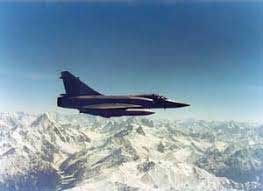
Flying med-evacuation sorties in the northwest and northeast were often ‘on a wing and a prayer’. Flying on single engine aircrafts like Otter and gawky looking choppers like Mi4 over the hills and valleys of the north east into airstrips of tiny towns with exotic names like Inkiong, Hayliong, Chakabama, etc was exhilarating. Flying the lumbering four engine AN 12 over the snowbound peaks of the Himalayas and landing at Leh, the highest military airfield in the world, in the rarified atmosphere of 17000 feet above sea level, was as close as one could get to ‘Touching the face of God’ as written by John Gillespie Magee, a second world war pilot in his poem ’High flight’.
Both the high and low point of that flying interlude was the occasion when the Mi4 helicopter I was flying in, on a med-evac mission, caught fire over the Brahmaputra, an ocean of a river in the north east. Singed and choked by fire and smoke, we barely made it to the other side of that great river and crashed on its banks, in Arunachal Pradesh, close to the Chinese border. We jumped out, and hunted for a bottle of rum, very hard to get in that ‘dry’ state. We also managed to also find some ’beedies’ and huddled on the river bank for three days and nights till a relief helicopter turned up.
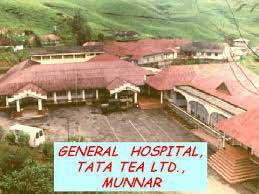
I stepped out of the air force after 14 years and spent the next fourteen years building up India’s finest rural health care system in the south Indian plantations of Tata Tea Limited. Unbelievably, the British ran those tea plantations till 1984 and left, leaving 70000 plantation workers and families with the most rudimentary health care system in Indian agro industry.
Indigent farming communities, from the hot plains of Tamil Nadu, had been lured to these hills a century earlier by the agents of the British, to live and work at unaccustomed altitude, and to battle with cold weather, mist and Malaria. They became indentured labourers; it was slavery of more recent times. A physician who served in the early days of the industry authored a book ‘Red tea’ where he wrote that every tea bush in the Nilgiris claimed the life of at least three Tamil workers. Tata companies were social welfare oriented, and in those remote hills, during the Eighties, when wild life (elephants, wild boars, panthers and poisonous snakes) was still an important cause of injury and death, we organized trauma care, intensive care, treadmill, echo and ultrasound, thrombolysis for Acute MI, ventilator support, modern blood banking, 100 % immunization cover for children and high risk obstetric care. We also launched National Board training programs, with teaching, training and research. We published almost a hundred papers, won national awards and also hosted national and international conferences.
I was a happy soul engaged in pure medicine when the sky was lowered on my head. My Chief Medical Officer, a colonel, died and the company assumed that, being an ex-Air Force officer I must also know management and saddled me with the additional responsibility of being the Chief Medical Officer.
That was 1991 when the Vethal clambered onto the shoulders of this Vikramaditya. I could never shake off that burden since; it got labelled differently each time, as CEO, COO, DMS, CMO, Medical Director and Clinical Director but the Vethal was always there, in one form or other. The only difference was that, in mythology the Vethal told stories; in this case I became the story teller to distract the Vethal; I wrote story after story, play after play and even a full length screen play for my movie maker daughter at London. Most of them had a bit of Medicine at their heart, as the core theme.
Then I stepped out of India, way back in 1998, and became a gypsy physician healing people seeking shelter in many caravanserais of the world. It is now euphemistically called Global Health!

Very appropriately, that journey began in the deserts of Oman, as Chief Medical Officer, of the Royal Guard, Sultans Armed Forces of Oman, as a uniformed Colonel. Oman was a relatively oil-poor country whose oil reserves were finite. The country was once frugal and lean; its nomadic desert tribes, the Bedouins, could live on just 3 dates a day and camel milk and the camels could go without water for twenty days. Suddenly Oman was beset with the NCDs, the gift of the newly found oil wealth. Trauma on the roads, obesity, Diabetes, Hypertension, hyperlipidemias, nephrolithiasis etc. began to exact a huge toll. For five years I worked on restoring a physically active life and making healthy choices of food a wiser strategy for winning good health of the armed forces in the new war in the desert against the NCDs.

Haiti in the French Caribbean was the next destination which was a harsh transition from a climate of indulgence to one of impoverishment. Once a country to which captured west Africans were brought to be trained and sold as slaves to plantations in the American south, Haiti was poverty stricken and beset with Caribbean’s highest prevalence of malnutrition, trauma from violence, HIV/AIDS, Malaria, Tuberculosis and Leptospirosis. I was the CEO of Dr. Albert Schweitzer Hospital, the country’s oldest humanitarian healthcare organization. Haiti also had the highest prevalence in the world of Peripartum Cardiomyopathy. Our hospital was a leading center of research into the disease. The harrowing story of PPCM spawned my book ’Ayiti Cherie ‘(Dear Haiti).

British Virgin Islands was the next country I chose to serve. It was Christopher Columbus who was mesmerized by the many islands in the crystal clear Caribbean Sea, with silvery sands on their beaches, and named them the Thousand Virgins. But to me it was also a battle ground with NCDs and the challenges of old age.
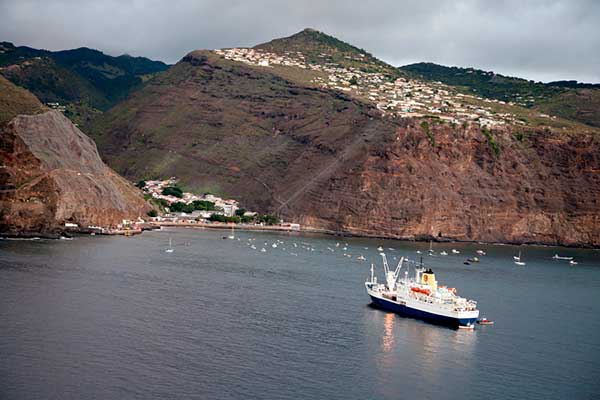
The dark clouds of ageing and loneliness and its huge associated health problems hung heavy and low over the next country I served, St Helena in the south Atlantic, where, 200 years back, Emperor Napoleon Bonaparte had been banished after defeat at the Battle of Waterloo against the British. The Island was the remotest British Island in the world. It was 6 days by sailing away from Cape Town, South Africa, into the middle of the South Atlantic Ocean. As the Chief Medical Officer it was my task to make the isolated Island self-reliant in taking care of its health care issues including heart and renal failure, respiratory crises, dementia and cancer.
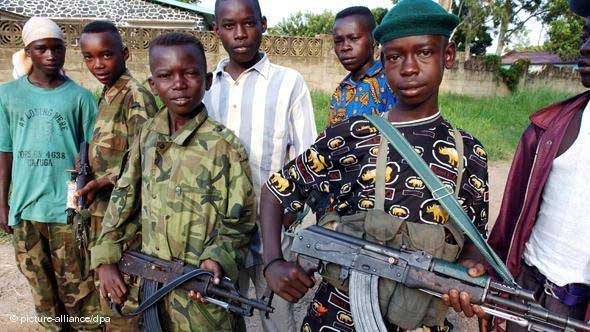
Africa came next, DR Congo first and then Nigeria. Both were populous countries, politically volatile, economically unstable and worryingly insecure. Ebola was born in the Congo and continued to be endemic. So was Lassa fever with respect to Nigeria. Both were raging when I was there. Ebola killed more health workers in the last epidemic than any other outbreak in recent history. Lancet published its first ever mass obituary on ten doctors who lost their lives in the epidemic at Sierra Leone, Liberia, Guinea and Nigeria. I was associated with the launch of two new Indo-African hospitals; I was CEO at Kinshasa, DR Congo and Chief Medical Officer at Akwa Ibom, Nigeria. Life was tough, but as it happens everywhere in the world patients and families were always wonderful, appreciative and supportive which made life and work meaningful.

One more leap across the oceans and we reached an ancient ‘land of mystery’- Papua New Guinea, in the Pacific, infamous for its history of cannibalism and the related encephalopathy, Kuru, somewhat like Bovine Spongiform encephalopathy, better known as the ‘Mad Cow Disease’.
It was a land of mountains and valleys, unexplored flora and fauna, a thousand tribes, at least 800 languages and dialects and almost 400 airstrips into which tiny aircrafts flew in to render emergency health care and humanitarian relief. I was Medical Director and Chief of Cardiology and Internal Medicine at the country’s only tertiary care hospital. Into its helipad would fly in the most challenging patients with major trauma, life threatening sepsis, cerebral Malaria, acute myocardial infarction and intracranial hemorrhage.
Two years later, it dawned on me that I had been 20 years away from India. On a dark night I looked across the sea and searched a way; The Kauvery Kalangarai flashed brilliantly and showed me the way home.
Looking back, I feel that I, a village urchin, was indeed very fortunate to have had the opportunity to serve sick people in many parts of the world. The world has been very kind to me, and I have a lot to give back. I pray for the time and good health.
For forty years my wife Raji Suresh has given me steadfast support, encouragement and advice which helped me to negotiate these challenging paths. At every fork and cross roads, I could have taken the easy path. She unhesitatingly pointed out the more difficult but also the more challenging and eventually gratifying path. Her personality and her own unique contributions to global health find place in my book ’Ayiti Cherie’. I shall always remain grateful to her.
I also thank our children, a son and daughter, both of who are highly accomplished professionals in fields other than Medicine. It may amuse you to know that I have always received better advice from them than what I ever attempted to give them.

